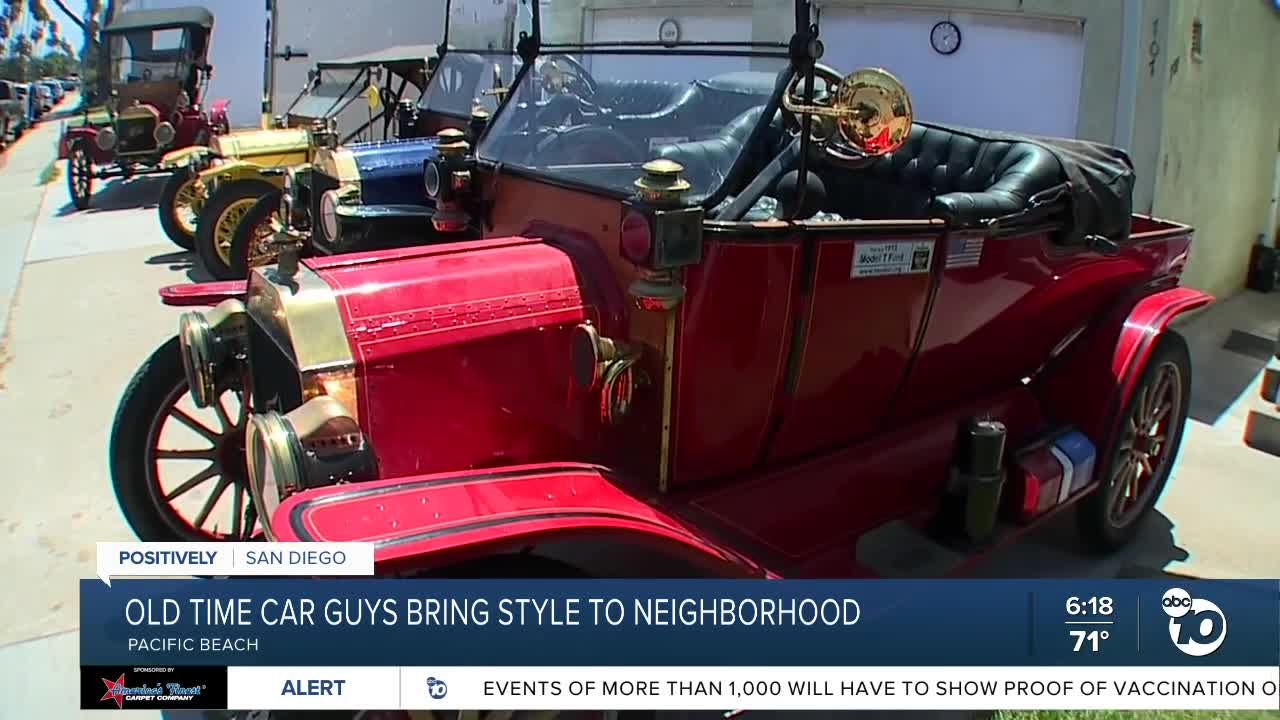SAN DIEGO (KGTV) – Two brothers in Pacific Beach are sharing their love of vehicles from the very early days of driving with the community.
The next time you’re in PB on a weekend, you may want to stroll by the corner of Crystal Drive and Wilbur Avenue for a chance to see the old-time cars Al and Bob Fisher have on display.
The brothers are neighbors in Pacific Beach. Both men are in their early 80s and both are retired engineers with an appreciation for the way things are put together.
The brothers are well versed in the history of their collection and the evolution of motorized transportation.
“The wheels are wood, like the spokes on a wagon,” said Bob. “And some of them were wider because the wagons were not conforming north and southward,” pointing to the fact that the wheelbase on the first motorcars was designed to match the ruts left by horse drawn wagons.
Also, the brothers said the dashboard, familiar to modern day drivers, was born from the horse drawn wagon, when it’s function was to block the mud kicked up by a dashing horse.
The Fisher brothers bought their first Model-T, a 1922 truck version, from a fellow Shriner in 2001.
“We paid him, what, about $4,000 for it,” said Bob, looking to his brother for confirmation.
The brothers said they spent an additional $30,000 to get it restored. But that was just the beginning, as the brothers had caught the bug known as car collecting -- or more accurately in this case, horseless carriage collecting.
“They're licensed by the state of California,” said Bob. “They have what the state calls horseless carriage license plates. But it's kind of like a vanity plate.”
“And on that horseless carriage,” Al added, “it had to have been initially registered before 1923.”
The vehicles have various peculiarities related to their development at a time when car makers were figuring out what would work best.
“You may have grown up with a standard transmission,” said Al. “You learned to shift with your hands, gas with your feet. This car, you gas with your hands, and you shift with your feet.”
Driving a car in the early 1900s also meant knowing some chemistry, as a side-mounted tank was used to mix the fuel needed to light the headlamps.
“The headlights were acetylene,” said Bob. “And the other lights -- the taillights and the driving lights -- were kerosene. They burned with a wick.”
If you were taking your early 1900s car out for a date, you may have used a special feature that looked somewhat like a rumble seat, elevated just behind the front driver and passenger seat.
“In the day, it was improper for unmarried couples to be out alone, so they built it with a chaperone seat on the back for the chaperone to ride in,” Bob said.
All five of the vehicles in the Fisher collection run and are street legal, with a top speed of around 40 MPH. Al and Bob like to drive them in parades and display them outside their Pacific Beach property on weekends for whoever happens to pass by.
“They stop and we answer any questions they have, to show them about it. Once in a while, we'll give somebody a ride,” said Bob.
So, have the brothers ever been tempted to race each other in vintage wheels?
“No, not really,” said Al. “They're too hard to put together.”
As for finding parts, there were more than 15 million Model Ts made by Ford in the early 1900s and the cars are popular for collectors to this day.
Al and Bob said they’ve been able to find most of the parts they need to restore their vehicles without much trouble.


